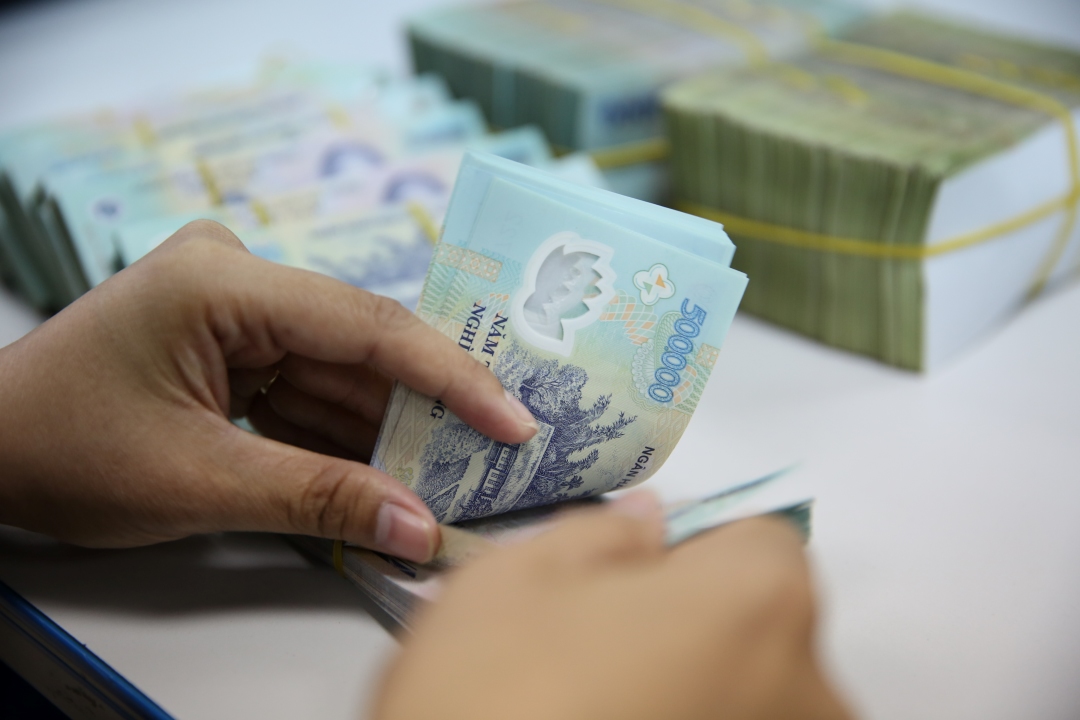The Government’s Decision 21 on green taxonomy has ushered in a new era for the green capital market, encompassing both bank credit and green bonds. However, for green capital flows to truly thrive, the completion of the legal framework and the synchronization of incentive policies remain key challenges to address.
Green taxonomy is unveiled
The Government has recently issued Decision 21, which outlines a green taxonomy covering 45 industries and types of projects across seven sectors. This framework establishes unified environmental criteria to identify and screen projects eligible for access to green financing, including both credit and bonds.
Credit rating agency Fiin Ratings said the final version of the decision reduced the number of eligible industries and project types to 45 from 80 in the earlier draft, and cut the number of sectors to seven from nine.
However, the updated taxonomy includes more stringent technical criteria and allows for flexible verification based on either national or international standards. Projects can be officially verified through one of two methods: by the state agency responsible for providing incentives or green financing, or by an independent assessment organization that meets regulatory requirements.
“The green taxonomy offers ample opportunities for financial institutions and businesses to tap into the green finance market via credit channels, and lays the groundwork for more concrete support and incentive mechanisms to accelerate the development of the green bond market in the coming years,” the report said.
Credit institutions have started to take action following the introduction of the green taxonomy, ending a period of waiting and anticipation.
For instance, Agribank announced that shortly after the taxonomy was issued, it released a list of business industries excluded or restricted from accessing green and social loans. Phung Thi Binh, deputy general director of Agribank, said that Decision 21 has created favorable conditions for banks to roll out preferential loan packages.
Agribank is currently one of the leading banks in rolling out large-scale green credit programs across various fields. These include a VND30 trillion package to finance investment projects in key industries and green sectors; a VND50 trillion package to support high-tech and sustainable agriculture; and a VND10 trillion “green credit” package offering preferential loans for individual customers.
A representative from OCB described the official launch of the green taxonomy as a key milestone that offers credit institutions a clear legal foundation to advance green lending in a more structured, consistent, and transparent way. This move is expected to help banks accelerate their sustainable finance strategies and unlock greater access to concessional funding from both domestic and international sources.
OCB is stepping up efforts to fully integrate green principles across its financial operations, from green credit assessment and environmental-social risk management to establishing a list of priority sectors for green lending. “We are actively reviewing and updating internal policies on green credit management, developing tailored green financial products, and expanding international cooperation, particularly in key areas such as green buildings, smart agriculture, clean transportation, and renewable energy,” the representative said.
Jason Yang, chief sustainability officer and country head of transformation at UOB Vietnam, said one of the key challenges in the market is the clarity around which projects qualify as green. A well-defined taxonomy is crucial not only for credit decisions but also for the issuance of green bonds, he emphasized.
In the absence of a Vietnamese green taxonomy, the bank relied on Singapore’s regional green taxonomy as a reference for guidance in Asia. “We are optimistic that now, with the official green taxonomy in place, one of the key hurdles has been addressed,” Yang said at the seminar titled “ESG: From Compliance Costs to a Driver of Sustainable Growth,” held in mid-July.
Further refinement still needed
At a seminar held in mid-July by the Vietnam Banks Association, where discussions centered on the newly released green taxonomy, bank representatives agreed that the market is showing strong engagement with the National Green Growth Strategy, particularly through various programs initiated by the State Bank of Vietnam (SBV).
In recent years, credit institutions have advanced their green agendas by adopting strategies and policies that include limiting credit to high-emission sectors, providing preferential interest rates for green loans, and developing sustainable finance frameworks in line with international standards.
Banks have also focused on strengthening governance capacity, refining internal processes, and improving green credit risk management models. At the same time, many have stepped up efforts to mobilize green capital, ranging from issuing internationally certified green bonds to partnering with global financial institutions.
While the green capital market is accelerating, several gaps remain despite the recent rollout of the green taxonomy. Speaking at the seminar, Mai Thanh Dung, deputy director of the Institute of Policy and Strategy for Agriculture and Rural Development and a contributor to the drafting of Decision 21, pointed out that the current list of industries in the taxonomy is still too limited compared to real-world needs. He noted that the list is expected to be updated and expanded going forward.
Another hurdle in unlocking green capital lies in the need for a comprehensive and coordinated policy roadmap, said Pham Thi Thanh Tung, deputy director of the SBV’s Department of Credit for Economic Sectors. She pointed to a range of issues that require attention, from taxes and funding sources to production technologies, market development, and the creation of emerging markets such as carbon credits.
 According to analysts at Fiin Ratings, several challenges remain, including compliance costs, limited technical capacity, and complex verification procedures – all of which require close coordination among stakeholders at both the corporate and regulatory levels.
According to analysts at Fiin Ratings, several challenges remain, including compliance costs, limited technical capacity, and complex verification procedures – all of which require close coordination among stakeholders at both the corporate and regulatory levels.
“Alongside clear, step-by-step guidance from the Government, businesses need to strengthen their governance capabilities and ensure transparency in reporting and disclosure systems to proactively and effectively benefit from incentive mechanisms,” Fiin Ratings said in its report. “For investors, the new green taxonomy provides a framework to assess portfolio risks and set expectations for issuers and companies.”
The representative from the SBV said the central bank will soon issue guidelines for credit institutions to extend green loans in accordance with Decision 21. In parallel, it is drafting a policy to provide a 2% annual interest rate subsidy for private enterprises and household businesses undertaking green projects, under Resolution 139 aimed at supporting the private sector.
In addition to enhancing the legal framework for green taxonomy, two key strategies can help accelerate green lending. The first is ensuring access to financing at costs compatible with long-term green growth. The second is implementing tax incentives, such as exemptions or reductions on income earned from green lending, to encourage greater participation from financial institutions.
Green loans on the rise
As of March 31, 2025, 58 credit institutions had outstanding green loans, according to data from the SBV. Total green credit reached VND704.2 trillion, marking a 3.57% increase against the end of 2024 and accounting for 4.3% of total outstanding credit in the economy. Most of the loans were directed toward renewable and clean energy (over 37%) and green agriculture (over 29%).
Although the proportion of green credit in total outstanding loans remains modest, green lending has grown at a much faster pace than overall credit in the economy (21.2% annually between 2017 and 2024).
At the end of May, the SBV released a new Environmental and Social Risk Management System (ESMS) Handbook, developed in collaboration with the International Finance Corporation (IFC). Serving as a practical guide, the handbook integrates and updates key regulatory developments in Vietnam, including environmental risk classification criteria under the 2020 Law on Environmental Protection; guidance on project screening and classification in accordance with Circular 17/2022 by the SBV; sector-specific environmental and social risk classifications from the EBRD; and international standards on greenhouse gas emissions inventory and reporting.









